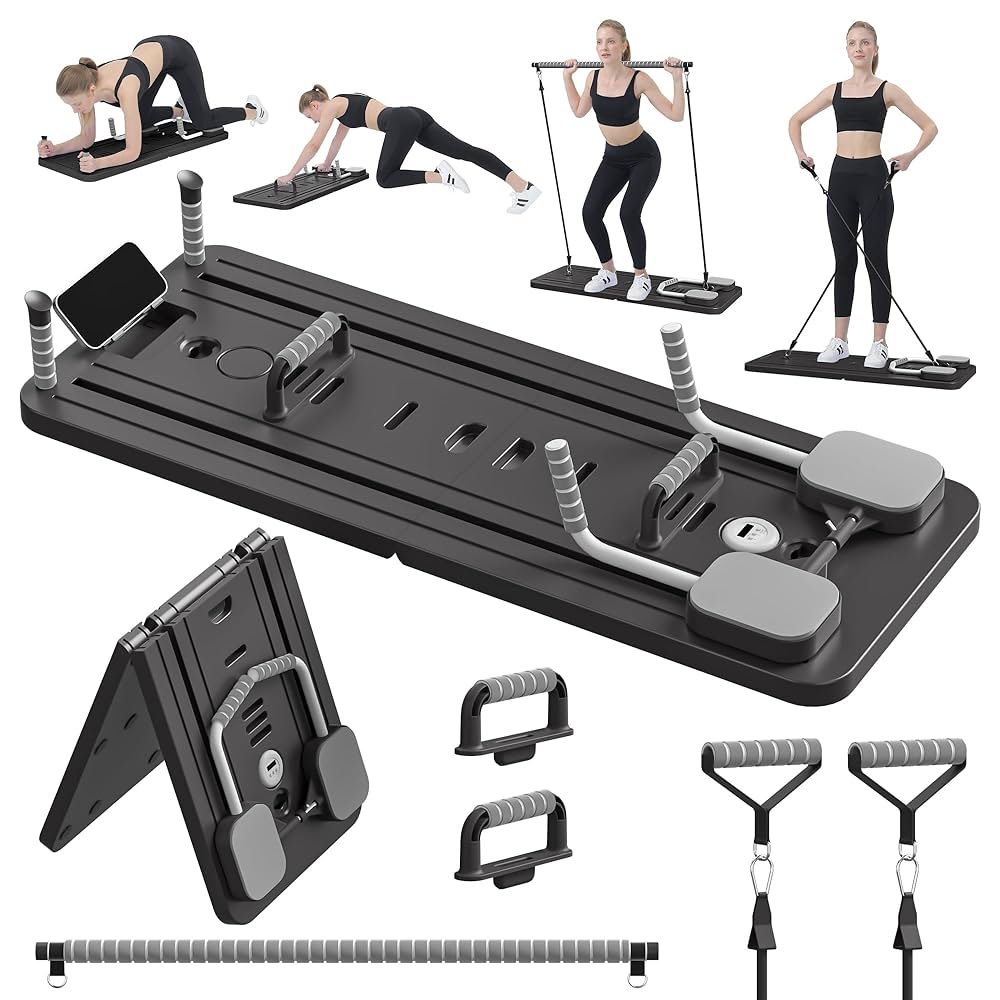Pilates has come a long way from its humble beginnings as a mat-based regimen. Nowadays, contemporary fitness buffs have access to all sorts of equipment that is supposed to improve strength, flexibility, and core support. Some of the most well-known devices include the Pilates Reformer and other hi-tech apparatus like the Pilates Board. Such advances in Pilates technology have ensured that one can have access to studio-quality sessions anywhere, be it in a professional environment or practicing Pilates at home.
This article discusses how the Pilates Reformer intersects with other Pilates machinery, the advantages of having them combined, and how this development in Pilates equipment is an effective Pilates workout.
The Rise of Pilates Equipment
When Joseph Pilates invented his technique in the early 20th century, he created the Reformer as a means of introducing resistance and accuracy to movement in the body. Its spring design produced smooth, controlled motion that worked to both strengthen and lengthen muscles at the same time.
Fitness professionals over the years have developed this idea further, designing compact equipment such as the Pilates Board, which offers similar advantages in an even more convenient package. This shift has made it possible for individuals to engage in Pilates outside of the studio, simplifying the ability to stick to a routine.
The Pilates Reformer: Classic and Powerful
The Pilates Reformer is still the standard against which all Pilates equipment is measured. The moving carriage, changeable springs, and supportive straps of the Reformer make it capable of providing a variety of exercises that engage every major muscle group. From footwork to arm training and spinal mobility, the Reformer assists both novices and advanced users in attaining greater alignment and control.
Advantages of the Pilates Reformer are:
- Whole-body strength and toning
- Increased flexibility and joint mobility
- Low-impact rehabilitation support
- Versatility for a multitude of exercises
For some, the Reformer is the backbone of Pilates exercise, providing countless choices to make sessions interesting and effective.
Step in the Pilates Board: Space-Saving and Convenient
Whereas the Reformer provides studio-level training, not all of us have the room or budget for one of these big machines. This is where the Pilates Board enters the picture. Lightweight, compact, and convenient to store, the Pilates Board enables you to replicate many Reformer-style movements using resistance bands, handles, and straps.
For home dwellers who like Pilates, the Board is a lifesaver. It allows individuals to work core strength, enhance balance, and engage in resistance-based exercises without taking up much space.
The advantages of the Pilates Board are:
- Portability and convenient storage
- Less expensive than a Reformer
- Ideal for travel and working out at home
- Smooth exercise transitions
It won’t entirely substitute for the Reformer, but it’s a great addition, especially for those who want to take their practice into their own homes beyond studio classes.
When Reformer Meets Machine: A Perfect Duo
Pairing the Pilates Reformer with the other machinery such as the Pilates Board develops a dynamic and multi-faceted training method. With the Pilates Board’s flexibility and convenience paired with the Reformer’s precision and control, the best of two worlds is achieved.
How they complement each other:
Variety in Training
The Reformer provides balanced, spring-based resistance, and the Board brings creativity and portability. Alternating between the two avoids routine and makes workouts engaging.
Accessibility
On busy days when you can’t get to the studio, the Board lets you continue enjoying a productive Pilates workout at home.
Balanced Workouts
Reformer workouts are ideal for focus strength training, whereas the Board is focused on balance and functional movement. Both complement each other in providing a balanced Pilates workout.
Smooth Transitions
Both devices permit smooth movements, allowing you to continue the thoughtful, low-impact philosophy that Pilates is famous for.
Example Pilates Routine: Reformer + Board
Here’s a sample of how to put together a hybrid Pilates routine incorporating both the Reformer and the Board:
Warm-Up on the Pilates Board
- Resistance band squats while standing
- Seated rows to engage the upper body
- Twists on the core for oblique activation
Strength on the Pilates Reformer
- Footwork on the carriage for leg strength
- Arm work with straps for shoulders and back
- Bridging for glute activation and spinal mobility
Dynamic Moves on the Pilates Board
- Plank variations with resistance bands
- Leg lifts and extensions
- Standing balance exercises for stability
Cool Down on Either
- Gentle stretches using straps on the Reformer
- Band-assisted stretches on the Board
This combination ensures you’re strengthening, lengthening, and balancing your body in every session.
Pilates at Home: Technology That Works for You
One of the biggest benefits of contemporary Pilates technology is access. You don’t have to depend exclusively on studio sessions to keep your regime going. With a Pilates Board, you can access a vast range of exercises from home, supplementing your studio-based Reformer practice.
Home Pilates tips are:
- Set aside a small, tidy area for exercise.
- Adhere to guided online sessions that integrate Reformer and Board workouts.
- Stay consistent with shorter, frequent workouts instead of occasional long ones.
- Use your home practice to reinforce skills learned in the studio.
By incorporating both tools, you’ll never feel limited by your environment—you’ll always have a way to stay active and engaged.
The Future of Pilates Technology
As Pilates becomes more popular, equipment will continue to adapt to accommodate busy lives. Pilates Reformer machines will continue to be studio favorites, while the smaller solution of Pilates Board will continue to inspire individuals who enjoy Pilates in their own homes.
The combination of old-school and new-school Pilates technology means that anyone from newcomer to advanced practitioner can have productive, easy, and fun workouts.
Final Thoughts
When Pilates Reformer is combined with contemporary machines such as the Pilates Board, you have the best of Pilates technology: precision, strength, convenience, and accessibility. Whether you practice in a studio or adopt Pilates at home, this combination provides all you need for a complete and satisfying Pilates workout. Read This
By blending classic equipment with innovative alternatives, you’ll keep your fitness journey exciting, effective, and sustainable ensuring that Pilates remains a lifelong practice for both body and mind.



